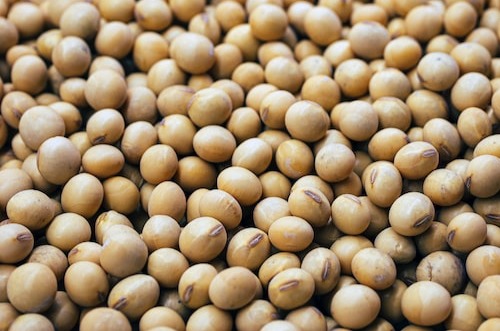
In W33 in the soybean landscape, soybean contracts on the Chicago Commodity Exchange (CBOT) experienced a sharp price decline. This was influenced by low oil prices and the European stock market’s poor performance. The downward market pressure stems from the improving conditions of northern United States (US) plantations, benefiting from recent rains in previously drought-affected areas. The United States Department of Agriculture (USDA) indicates that 59% of US soybean crops were rated between good and excellent as of August 13, above market expectations of 55%. Also, 29% of US soybeans were in good condition, and 13% were between bad and very bad. Soybean contracts slated for Sep-23 delivery reached USD 13.39 per bushel, a decrease of 1.01% from the prior close. Soybean contracts slated for Nov-23 delivery dropped by 1.75% to trade at USD 13.24 a bushel.
The Foreign Trade Secretariat of the Ministry of Development, Industry, Commerce, and Services (Secex) indicates that Brazil’s soy exports amounted to 3.77 million metric tons (mmt), valued at USD 1.86 billion in the first nine working days of Aug-23. This represents a significant 61.80% year-on-year (YoY) increase in volume. The average soy shipment per day stood at 418.32 thousand metric tons (mt), while the daily average revenue reached USD 206.50 million, an increase of 27.20% YoY in average value. However, the average price for this period was USD 493.60/mt, a 21.40% decline compared to Aug-22.
El Niño years bring varied rainfall to Brazil's regions, and 2023 is no different. While the south and southeast regions register increased rain, the north and northeast regions face water shortages. In the midwest region, rainfall and strong winds are predicted, which may affect soybean growth. A cold front with 40 milliliters (mm) to 60 mm of rain is approaching the south region, aiding soil moisture, while frost follows in Rio Grande do Sul. Southeast's rain is not likely to fully replenish soil moisture, and Minas Gerais may regain rain from Sep-23 to Oct-23. Mato Grosso do Sul benefits from upcoming rain for soybean sowing, but Mato Grosso and Goiás face reduced October rain, affecting crop start. The northeast's water scarcity continues except in coastal areas with high fire risks due to high temperatures and low humidity. In the northern region, stable weather prevails, with Amazonas and Roraima experiencing brief showers. Tocantins, Acre, and Rondônia are also facing fire risks due to low humidity and high temperature. Decreasing spring precipitation could further impact soybean crops.
Lastly, soybean prices received support in the Russian market in W33 due to the increased cost of soybean oil and meal. This was influenced by the sunflower oil price uptick and the US dollar's direct impact on Russia’s soybean complex. Nevertheless, soybean harvest commencement in the south will likely exert the traditional downward pressure on price quotations, considering the associated activities and the processing of new-crop rapeseed. In the central region, major players like the Sodruzhestvo and Cherkizovo groups are bolstering their refining capacity, intensifying volume competition, and potentially leading to elevated price premiums in central Russia.




